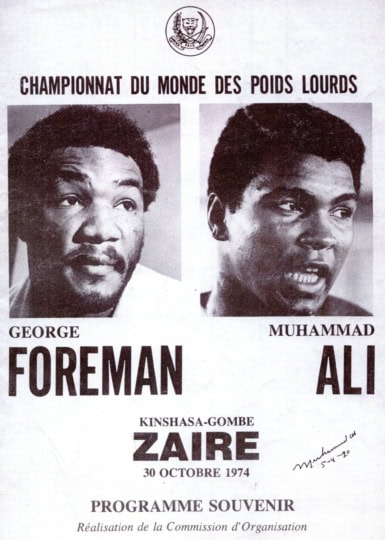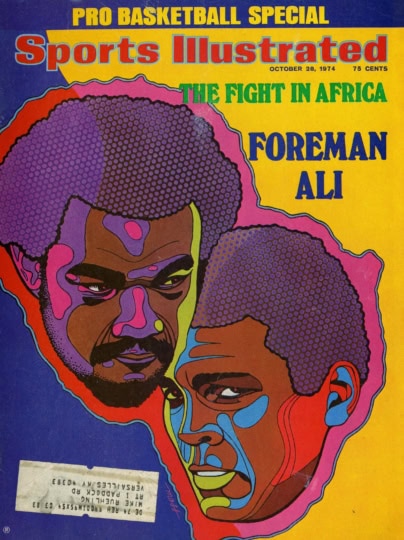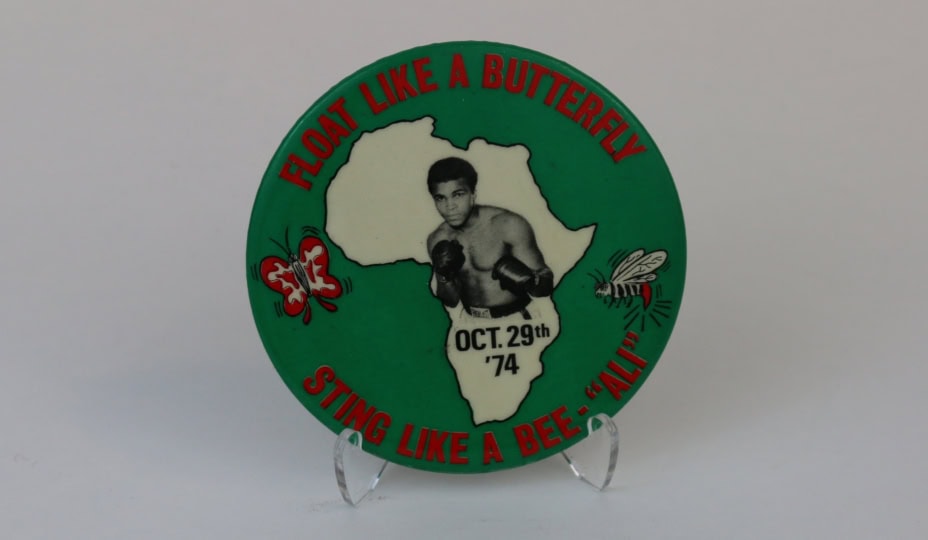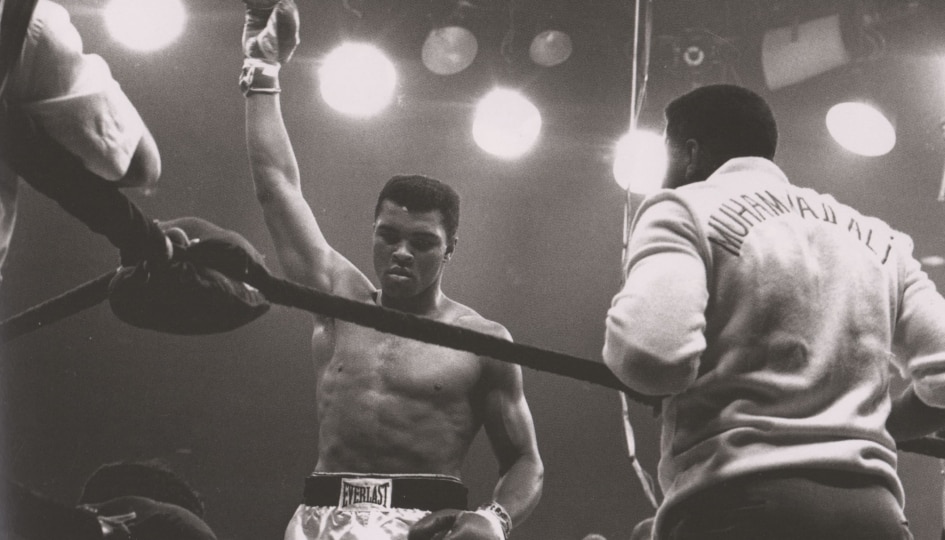Roadwork to the Rumble
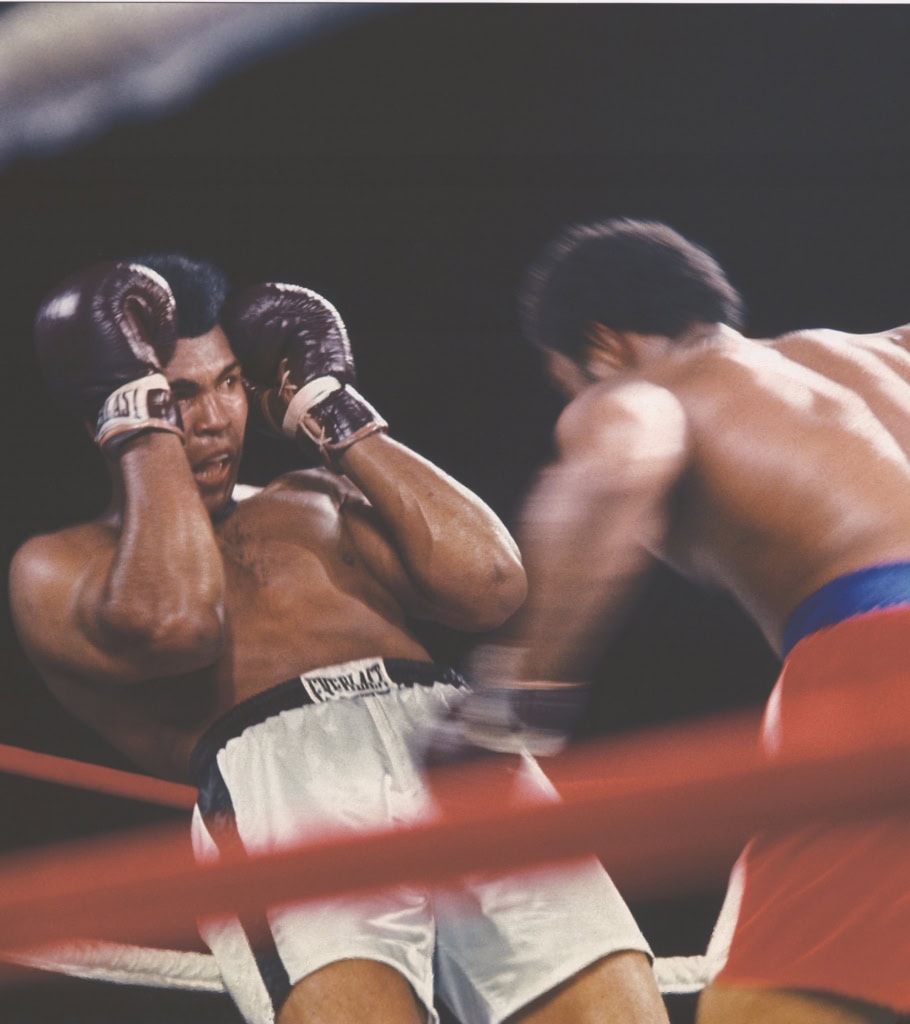
The Rumble in the Jungle: Oct. 30, 1974

The Famous Heavyweight Match-Up
Fifty years ago, Muhammad Ali prepared for one of the most important fights of his career. He was set to face a younger, stronger boxer to reclaim the heavyweight title that had been stripped from him seven years earlier. Many elements of this bout are etched in history, making it one of the greatest fights of all time.
Originally scheduled for September 25, the fight was delayed after George Foreman sustained a cut above his right eye during a sparring session with Bill McMurray. Postponed by five weeks, the bout finally took place on October 30, 1974, in Kinshasa, Zaire (now the Democratic Republic of the Congo) at 4 a.m. local time—prime time for US viewers—at the 20th of May Stadium (now titled “Stade Tata Raphaël,” or Father Raphael Stadium).
Don King, the event’s promoter, convinced Zaire’s President Mobutu Sese Seko to sponsor the fight. Both Ali and Foreman were paid $5 million each. The fight became the most watched live broadcast at the time, drawing over 50 million viewers worldwide and approximately 60,000 in-person attendees. It grossed an estimated $100 million.
During the fight, Ali famously introduced the Rope-a-dope technique, leaning on the ropes to absorb punches while conserving his energy and allowing Foreman to tire himself. As Foreman grew fatigued, Ali whispered tauntingly into George’s ear, “That all you got, George?” before delivering a knockout blow in the eighth round to win his second Heavyweight Championship title.
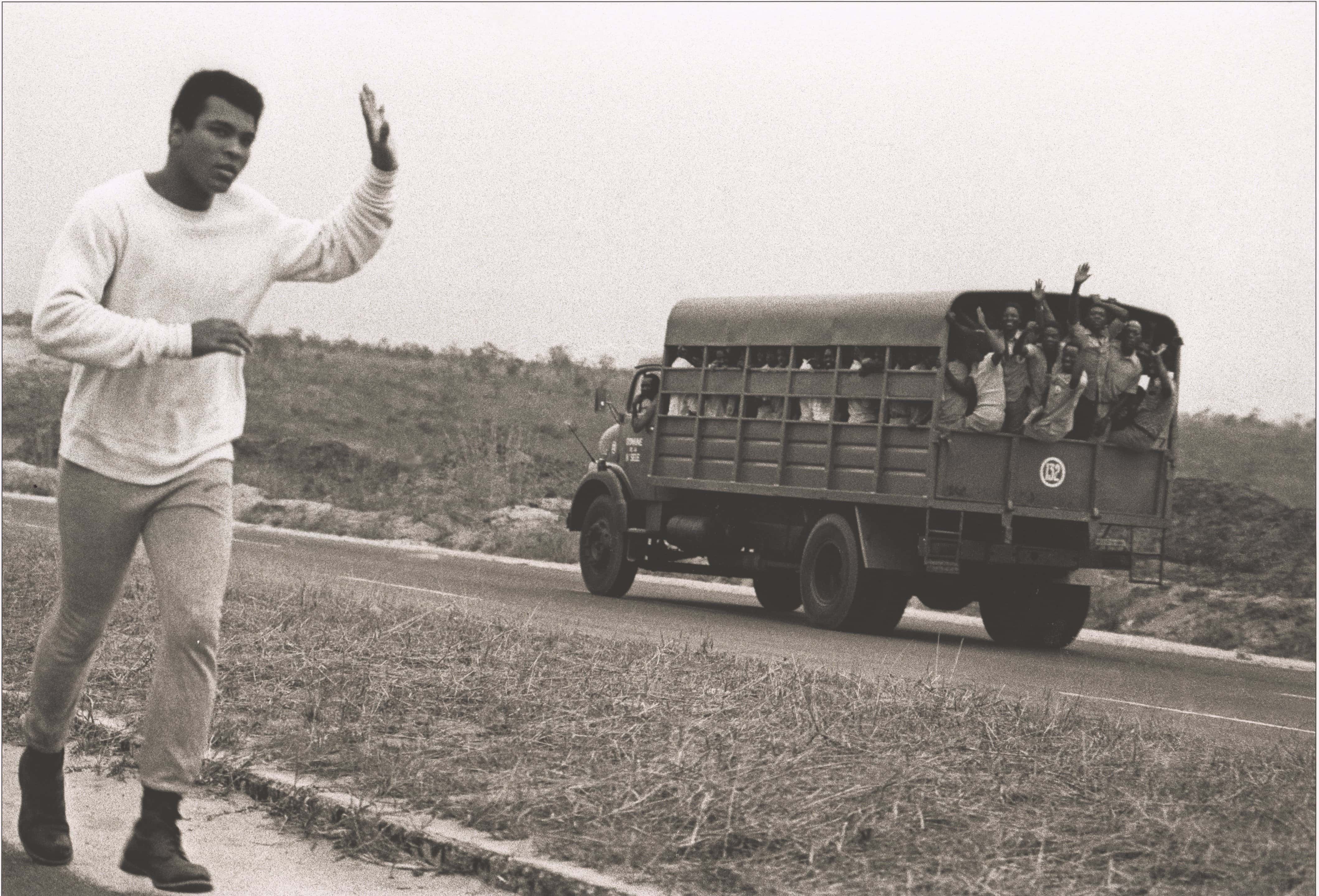
The Fighters Arrive
Ali and Foreman arrived in Zaire more than a month ahead of the match to train.
The Fighters Arrive
Ali and Foreman arrived in Zaire more than a month ahead of the match to train.

Bring the Crew
Weeks before the originally scheduled fight, both Ali and Foreman arrived in Zaire to prepare. Ali landed on the evening of September 10, 1974, with an entourage of over thirty people, including family, friends, and sparring partners, aboard President Mobutu’s private plane. Foreman followed 24 hours later, arriving on the evening of September 11 with his team of 19, which included trainers Dick Sadler and Archie Moore. Foreman also brought his German Shepherd, Dahgo, which further endeared Ali to the local crowd, as the dog reminded many of the police dogs used during Belgium’s colonial rule.
In Each Corner
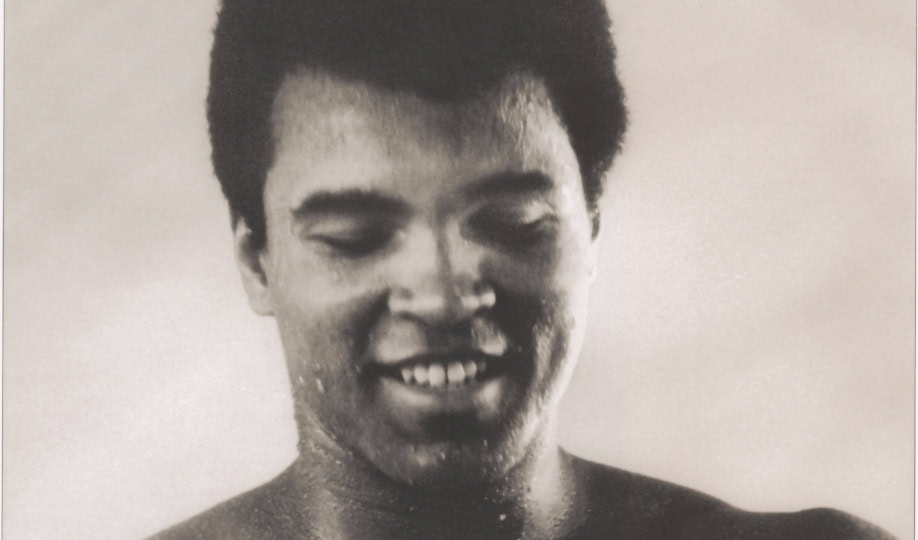
Muhammad Ali
Former Heavyweight Champion
Age: 32
Weight: 216 lbs
Height: 6 ft 3 in
Hometown: Louisville, Kentucky
Nicknames: “Louisville Lip”, “Greatest of All Time”, “The People’s Champ”
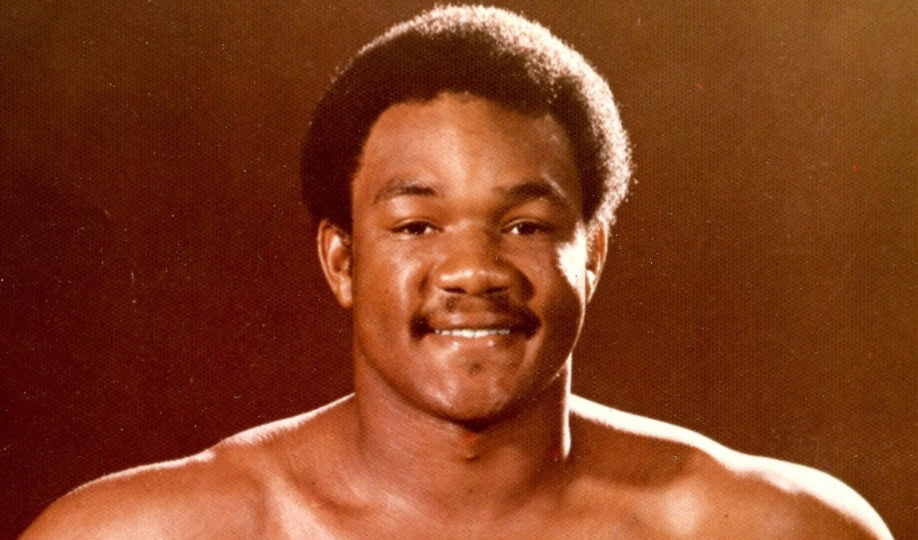
George Foreman (Houston, TX)
Heavyweight Champion
Age: 25
Weight: 220 lbs
Height: 6 ft 4 in
Hometown: Houston, Texas
Nickname: “Big George”
Watch Fight Highlights
Muhammad Ali defeated George Foreman and debuted his famous "Rope-a-dope" technique in this fight. (Actual date of fight: Oct. 30, 1974)
Watch Fight Highlights
Muhammad Ali defeated George Foreman and debuted his famous "Rope-a-dope" technique in this fight. (Actual date of fight: Oct. 30, 1974)

Behind the Scenes
Several well-known journalists were sent to document this important fight.
Premier Press Pass
In a sea of American journalists covering the fight, a few notable names stood out: Norman Mailer, Hunter S. Thompson, and George Plimpton.
Mailer was sent to Kinshasa by Playboy magazine and was tasked with covering the event. During his time there, he had access to both fighters’ camps as they trained and prepared for the bout. The following year, Mailer published a non-fiction book called The Fight, offering detailed observations and insights into the lead-up in both fighters’ camps and the match itself.
Hunter S. Thompson, a fellow Louisville native, was dispatched by Rolling Stone magazine to cover the fight. However, he succumbed to his vices, spending the evening of the title fight in a stupor, floating in the hotel swimming pool before eventually going to bed.
“What fight? Oh, I didn’t go to the fight. I stayed in the hotel swimming pool. I lay on my back looking at the moon coming up, and the only person in the hotel came and stared at me a long time before he went away. Maybe he thought I was a corpse.”
– Hunter S. Thompson
Plimpton, meanwhile, covered the fight for Sports Illustrated and later appeared in the 1996 documentary When We Were Kings, directed by Leon Gast, which chronicled both the music festival and the Championship bout.
Watch Trailer
Filmmaker Leon Gast documents the story of the Rumble in the Jungle in the 1996 film "When We Were Kings."
Watch Trailer
Filmmaker Leon Gast documents the story of the Rumble in the Jungle in the 1996 film "When We Were Kings."
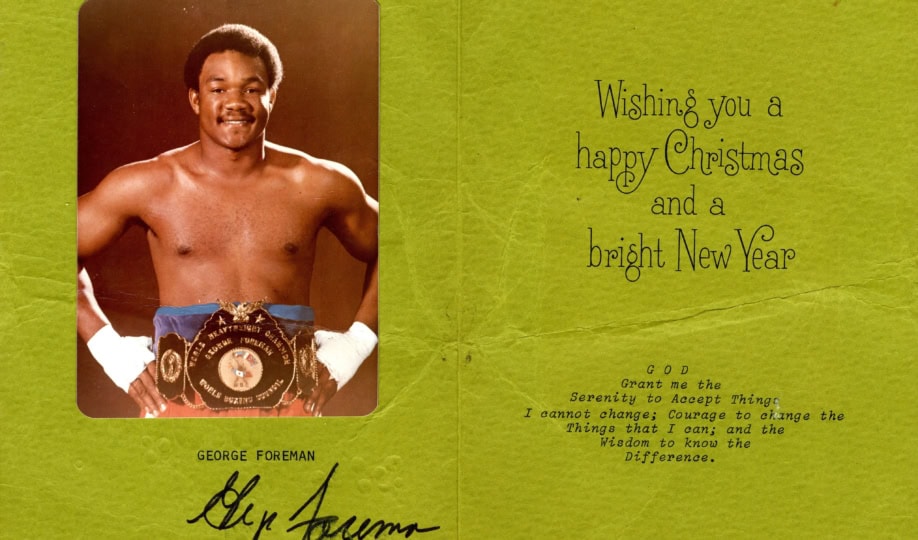
After The Fight
Despite the legendary rivalry before and during the fight, Foreman and Ali soon became great friends.
Though the exact year is unknown, George Foreman sent Muhammad Ali a Christmas card featuring a photograph of himself wearing the heavyweight title belt. The gesture highlights the friendship that developed between the two boxers. After competing in one of the most watched and dramatic upsets in boxing history, Foreman and Ali remained friends until Ali’s passing.

Zaire 74
Music Festival
Music Festival
The three-day event took place from Sept. 22-24, 1974, meant to promote The Rumble in the Jungle before the fight was delayed.
Solidarity through Music
Zaire 74 music festival, an event designed to promote racial and cultural solidarity between African Americans and Africans. The three-day festival, held from September 22-24, was conceptualized by Don King and Jerry Masucci, and organized by trumpeter Hugh Masekela and record producer Stewart Levine.
Initially, the concert and fight were meant to occur consecutively, with the festival serving as a promotional lead-up to the match. However, when the fight was postponed, the festival proceeded as scheduled. It featured a mix of African, primarily Congolese, and African American performers, including South Africa’s Miriam Makeba, Franco, Tabu Ley Rochereau, B.B. King, James Brown, Bill Withers, The Spinners, Etta James, The Pointer Sisters, and Lloyd Price.
Watch Performance
B.B. King performs "The Thrill is Gone" at Zaire 74.
Watch Performance
B.B. King performs "The Thrill is Gone" at Zaire 74.
Check out our Digital Exhibit on the Rumble in the Jungle below!
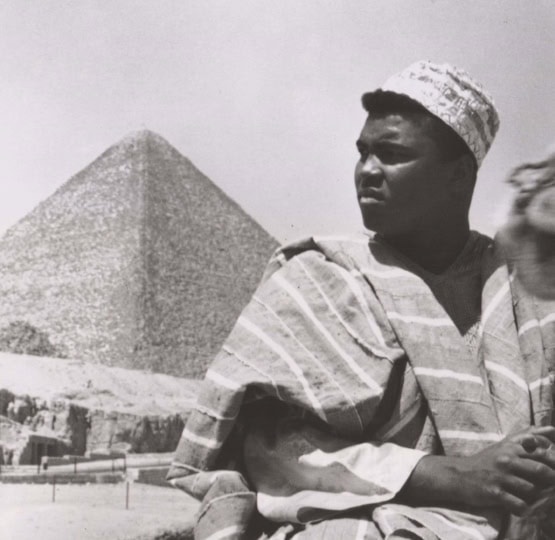
Ali's Connection to Africa
The Champ's appearance in Zaire was not the only time he visited the continent.
Immersing in Culture
Ali first visited Africa in 1964, shortly after his victory over Sonny Liston to claim his first heavyweight title. His journey began in Ghana, followed by stops in Nigeria and Egypt. During his travels, Ali declared, “I am an African,” expressing a deep connection to the continent. He was surprised by the diverse beauty and excellence he encountered, vastly different from the misconceptions he was taught to expect.
In 1974, the Rumble in the Jungle and the Zaire ’74 festival were designed to bridge the gap between African and African American cultures, promoting racial and cultural solidarity and celebrating Black pride. Zaire, now known as the Democratic Republic of the Congo, was then under the dictatorship of President Mobutu Sese Seko, who ruled from 1965 to 1997. Ali spent nearly two months in Kinshasa, acclimating to the tropical climate, training for the fight, and immersing himself in the local culture.
“Flying over the Sahara Desert. African Airlines, with all African stewardesses, all African pilots. Boy, this is the first free feeling I ever had in a long time. Ain’t this something, flying in an airplane with all black pilots, all black crew. This is strange to the American negro. We never dreamed of this. And every time we watch television, they show us Tarzan and the natives and the jungles. They never told us that Africans were more intelligent than we are. They speak English. They speak English, French and African. We can’t even speak English good.”
–Muhammad Ali, When We Were Kings
Speaking for Peace
In the late 1970s, Ali spoke out against apartheid and racial injustice, campaigning at the United Nations. He addressed the UN Special Committee against Apartheid, advocating for peace and spirituality. For his work, Ali was later honored as a United Nations Messenger of Peace in 1998.
Ali’s connection to Africa continued in 1980 when he embarked on a goodwill tour on behalf of President Jimmy Carter. He traveled to several African nations, encouraging them to join the U.S. boycott of the 1980 Olympic Games in Moscow. During this trip, Ali met Kenyan President Daniel Arap Moi in Nairobi.
Watch Clip
Muhammad Ali addresses the UN Special Committee against apartheid, promoting peace and unity.
Watch Clip
Muhammad Ali addresses the UN Special Committee against apartheid, promoting peace and unity.
Additional Travels
In 1986, Ali returned to Egypt as part of an initiative to promote the Ali 3-WC, a limited-edition sports car inspired by his career as a three-time world champion. During his visit, Ali held a press conference at the Marriott Hotel in Cairo, visited the Pyramids, and prayed at the Mosque of Muhammad Ali Pasha.
In 1988, the Islamic Dawa Organization invited Muhammad Ali to Sudan as part of a humanitarian mission organized by the American Society for Humanitarian Aid and Development (ASHAD). During the trip, Ali met with Prime Minister Sadiq al-Mahdi and visited refugee camps where people were fleeing famine. After Sudan, Ali traveled to Uganda, where he spoke at the Uganda Muslim Supreme Council and toured schools and clinics established by the Islamic Dawa Organization.
In 1993, Ali traveled to South Africa to meet with Nelson Mandela, further cementing his legacy as a global advocate for peace, justice, and solidarity.

